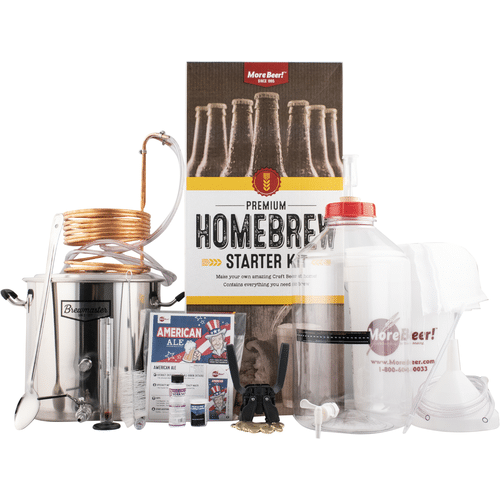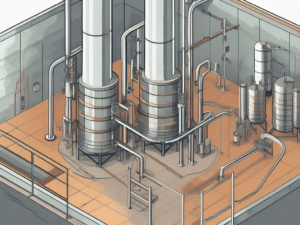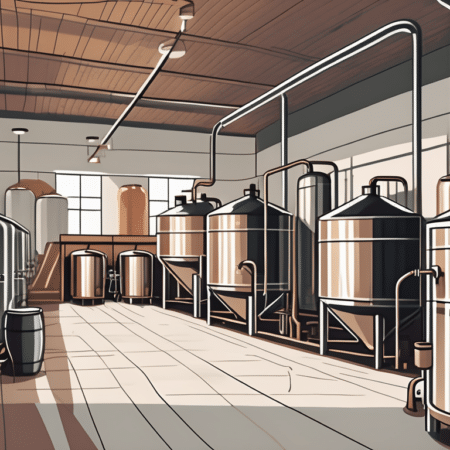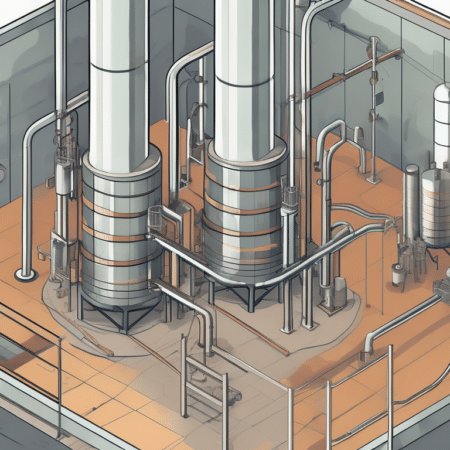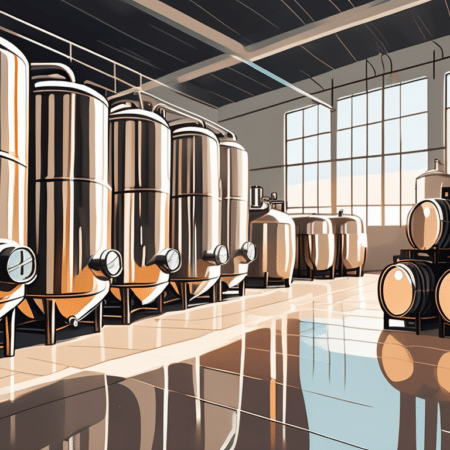The question that you are probably asking yourself (and that 99% of newbie’s are asking) is: “Can I also produce homemade beer? The answer is yes!!
First of all, you need to know that there are different methods or techniques for home brewing, which we can categorize in three groups
Kit Beer
The simplest, cheapest and fastest technique, particularly suitable for those who want to try making beer for the first time. It is based on the use of a jar of concentrated malt extract.
E+G Technique
Stands for “extract + grains”: it is an intermediate technique between the kit and the all grain, which combines the practicality of the kit with a certain amount of freedom and creativity in the preparation of the recipe.
All Grain Technique
The most advanced and complex technique, used to produce beer without the kit starting from the primary ingredients of the beer, i.e malt, water and hops.
Now you’re wondering: what is the technique for me? Answering this question is not easy. The different production methods have very different costs, technical skills and space requirements. Much depends on you, on your aspirations and on your possibilities (both economic, time and space). Now we will try to understand together which of the three options that we mentioned above really suits your needs. Read these short paragraphs and you will find the answer.
How much does it cost to make craft beer in your own home?
The cost varies depending on the type of technique you choose to use and the amount of beer you intend to produce. Assuming a quantity of 20 liters of beer, home brewing with the kit costs about $ 100 -$120 as the starting price (kit price and the first extract), plus $20-30 for each subsequent crush you make.
With the grain it starts from a minimum of 200 % (to go up) to buy a minimum of equipment, plus 50-60 $ for each subsequent crush. E + G have a start-up cost of $ 100-150, plus $ 40-55 for subsequent packages.
Where to make beer at home. How much space do you need for home brewing?
Making beer with grain requires a large space: a garage, a cellar or a garden, plus a storage room to store the equipment. The beer with the kit or with the E + G method can also be made in the kitchen, and the equipment is easily stored in a closet. Also consider that the beer needs a particular and constant temperature, so make sure there is a cool and not directly exposed to the sun where to place the fermenter.
What is the ideal temperature for home brewing?
The beer ferments between 12 and 24 degrees. You must therefore find an environment in your home that maintains this temperature in a stable manner. It is important that the temperature remains constant and is not subject to sudden changes. If the environment is too cold you can help yourself with a “thermal blanket”, an instrument that “heats” the fermenting beer keeping it at the desired temperature.
When to make beer at home?
Due to temperature issues, it is advisable to produce beer in the period between September and May, in order to avoid particularly hot summer months. This obviously depends on the climate of your city and the fermentation spaces you have available.
Is Homebrewing complicated?
Answer is No. The kit method can be done by anyone, even a trained monkey. All grain, on the other hand, requires in-depth documentation and a minimum of experience. Nobody is born clearly learned, but we suggest you start with the kit method so as not to be discouraged by the complexity and difficulties that the All grain reserves. When you have acquired more confidence, you can move on to the next step.
Is making beer at home legal?
The first thing you have to put in your head is that brewing beer at home is not an activity of scientists or engineers. Reading this guide and following some small tricks you will be able to make a good beer to share with your friends.
The second thing is that you don’t have to hide your kit when passing the steering wheel. Since 1978, home brewing in USA is perfectly legal! However, it is sufficient for it to be used for its own consumption. If therefore you intend to sell it, you should open a brewery and open a new immense world.
Well, did you get an idea about the method best suited to your needs? Read on and you will know more about the home brewing process.
Ingredients For Making Beer At Home

Let’s find out what are the ingredients of homemade beer. Beer is the product of malted cereals fermentation (fermentation we said, not distillation). Cereals, exactly.
Need some examples?
Barley, wheat, rice, oats, rye, spelled and so on and so forth. This means that beer can be brewed with each of these nice friends. Although most of the beers are produced with the exclusive use of barley malt.
The malt is nothing else than the germinated and subsequently dried cereal. Some cereals can also be used in their pure, or not malted, version, but a certain quantity of malted cereal is still indispensable.
The second ingredient is hops. It is the flower of a sympathetic plant related to cannabis. Hops are used to give bitter and particular fragrances ranging from resinous to fruity.
Finally we have the most important ingredient: water. The ground malt is infused in water at different temperatures. Then a sugary liquid is obtained which is filtered, boiled together with the hops, then left to ferment for a period between 7 and 20 days.
Home Brewing Techniques
Production with A Homebrewing Kit
Making beer with the kit requires little space and you can do it comfortably even in the kitchen of your home.
Beer is obtained by diluting the extract of malt in water, a syrupy commercially available in tin cans, which can be purchased online or in one of the many homebrewing, beershop or agricultural stores in your area. For this reason, in this regard we also talk about “brewing beer with the extract”.
Production via E + G Color
E + G – Extract + Grains
Literally “Extracted more grains”, E + G is a mixed technique between the kit and the all grain. It is a question of making a must with malt extract, to which are added special malts, or malted cereals with particular characteristics that contribute decisively to modifying the result of the finished product. For example, they can make a darker color, a tone of coffee / chocolate, a biscuit-like flavor … etc.
The malt extract to buy is a special type, as it is “not hopped”. They are basic extracts (Amber, Light etc) with essential organoleptic characteristics. It is like buying a blank canvas on which we can then draw what we want. In addition to adding the special malts we can also carry out the hopping, choosing variety and quantity of hops to use.
Homebrewing With All Grain Technique
The all grain technique is the most complicated, which requires more economic resources, time, space and passion. In all-grain we start directly from the raw materials of beer: malt, water, hops, yeast. No pre-packed extracts. It is the small reproduction of an industrial process. It starts by grinding the malt and making it cook in infusion in the water following specific steps provided in the recipe. The resulting must is filtered and boiled with the hops, cooled and fermented.
The substantial difference therefore lies in the malt infusion process (mashing) which requires a series of additional knowledge and instrumentation, which also involves a considerable increase in equipment costs.
Now you are ready to start. Have you chosen the home brewing method that’s right for you? Well, read this guide and start making beer at home or open your own brewery!

